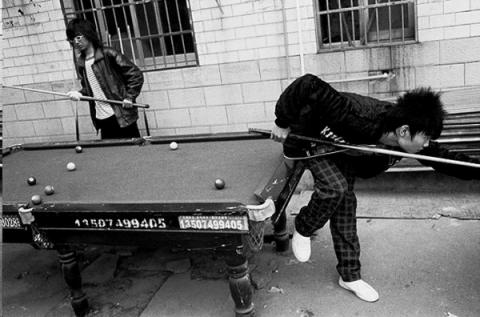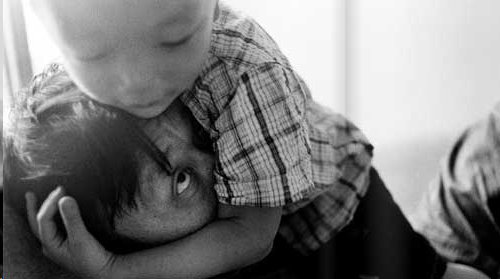Photographer Rian Dundon Explores a Different Side of China

From New America Media:
It’s that same nervous energy -- a sort of daring uncertainty - that animates the subjects of his forthcoming book on the Chinese city of Changsha, a one-time stronghold for Mao Zedong’s incipient Communist Party. Today, it is home to 6 million souls all navigating China’s dizzying rise to superpower status.
Nowhere is Mao to be seen, appearing just once in Dundon’s work.
“A sprawling metropolis of ad hoc concrete, grand boulevards and neon dreams,” is how the Bay Area native describes the city. Far from the coastal boomtowns of Beijing and Shanghai, Changsha is, he adds, “literally built on top of its own ashes… and I loved it.”
Burned to the ground in 1938 by Chiang Kai-shek as he fled advancing communist forces during China’s civil war, Dundon says the event remains a living memory for Changsha’s elder residents, even as those in their 20s know only the dislocating fury at which China is developing.
For all, the question is the same. “How do you find a place in this society?”
\
Dundon traveled to China for the first time at the age of 24 in 2005, after his then-girlfriend secured a job in the city of Jishou, in the central province of Hunan. A year later, he remained behind even as she prepared to leave. “China took me from her,” he admits.
And for a moment, the shadow of its memory passes across his face, turning his Irish features into a simile of the very people he’s photographed. He looks Chinese.
With no knowledge of the country or its language, Dundon quickly immersed himself in the “sensuality of living,” frequenting underground gay bars, punk clubs and Triad weddings. “I didn’t set out to make a statement about China,” he insists, but rather about the ways people “get by.”
Still, for the average viewer it’s difficult to block out the larger context. Headlines decry the lack of human rights, the corruption, and the awesome wealth that has enveloped the global economy. All seek to capture the unfolding story that is China, its citizens “bit players” navigating the “demands of life and family… guided by pragmatism, never politics.”
Dundon’s black and white images are alive with emotion, individuals alternating between joy, frustration, loneliness. Buffeted by forces both political and economic, each displays a determination -- almost tragic, like the nation -- to remain whole, despite an obvious fragility.

In one image a young 5-year-old clings to his father’s head, his arm framing a single eye as it peers up, the lines of fatigue contrasting sharply with those of his youthful toddler. The boy, an only child, cries as his single day of play with friends comes to an end.
“Outside is too dangerous,” his father warns. Eager to assuage the boy’s loneliness, the parents arrange weekly play sessions with other neighborhood kids. The rest of the week is filled with “chalky classrooms” and the “concrete box” of the family apartment. Neighbors remain strangers.
“This is how families are adjusting,” explains Dundon. “When you live in a place that is this tumultuous… things are changing by the minute, and people are very much impacted by that.”
It’s that impact that Dundon captures, presenting what he describes as an “honest” portrayal of life in China that many both in and out of the country rarely see or take note of.
“I’ve been accused [by some] Chinese of presenting the country in a bad light,” he admits, though a fair number were also impressed by his work, much of which stems from the deeply intimate relationships he formed with people during his time there.
“There is a line between honesty and exploitation,” says Dundon, who notes his own photography is “a byproduct” of the friendships and connections he made. He also steered clear of anything overtly political, which he says kept him off the radars of government minders.
Still, the tension that resonates from his images and that characterize daily life for the average Chinese clash with the government’s own stated goal of creating and preserving a “harmonious society.”
Asked about whether his photos crossed that line, Dundon offered this reply. “Everyone knows the harmony is a joke.”
Dundon recently launched a blog on the crowdfunding site Emphas.is and is aiming to raise some $15,000 for the first run of his book, which is due out this summer.
“I guarantee,” he says, “the book will change the way you see China.”
Photos by Rian Dundon. For more information, visit www.riandundon.com






























































































































































































































































































































